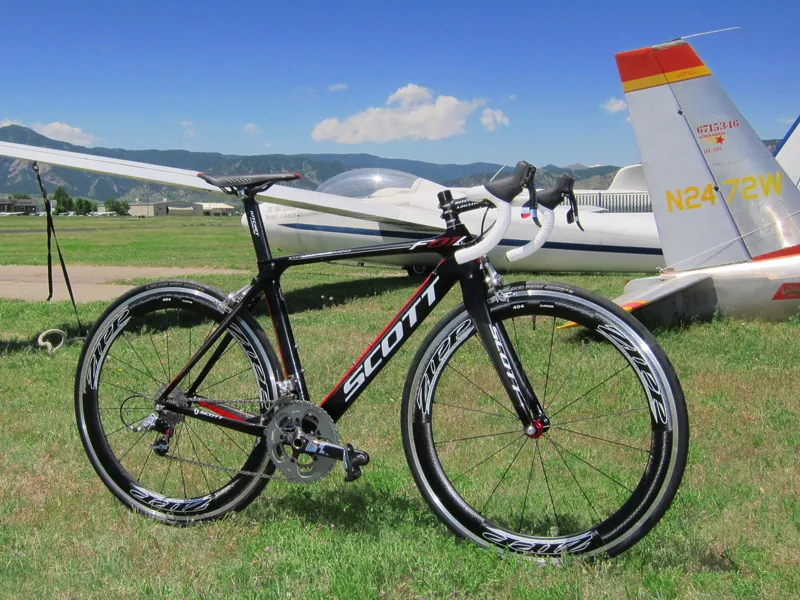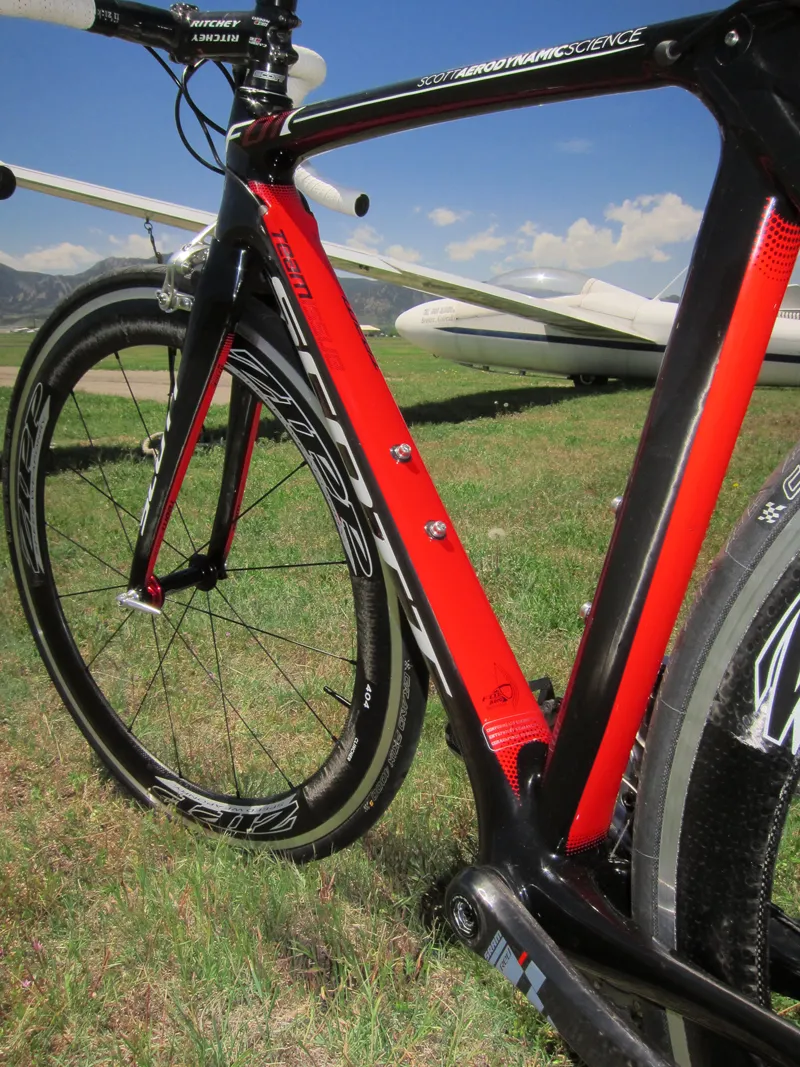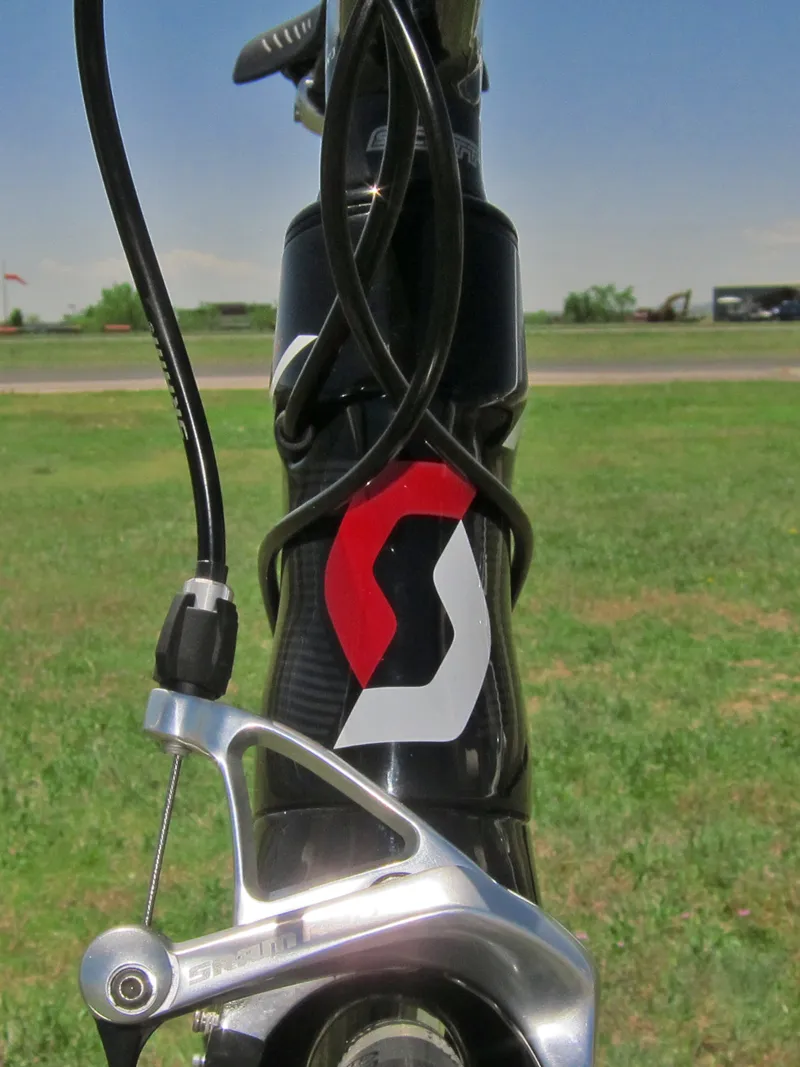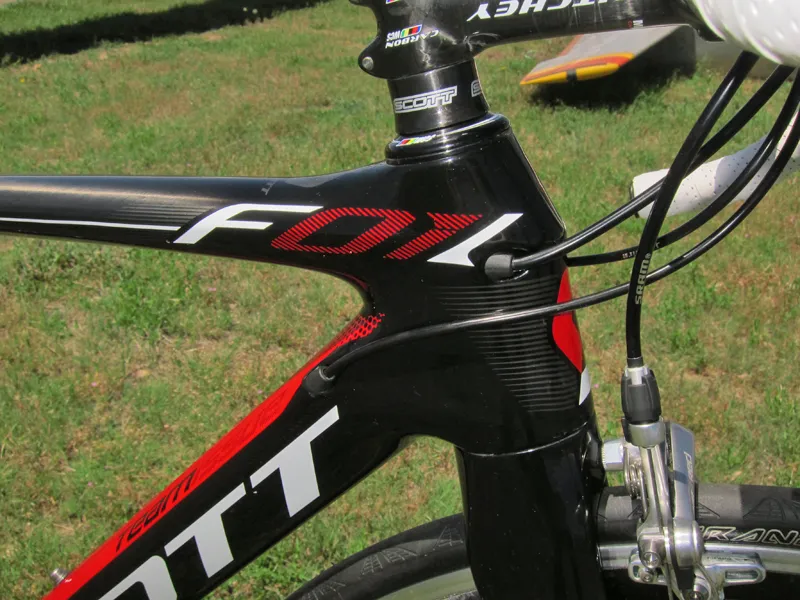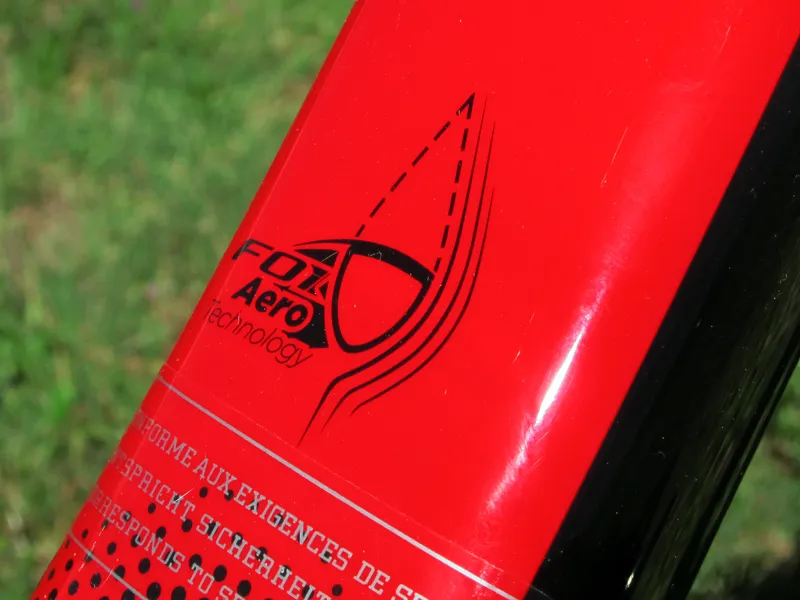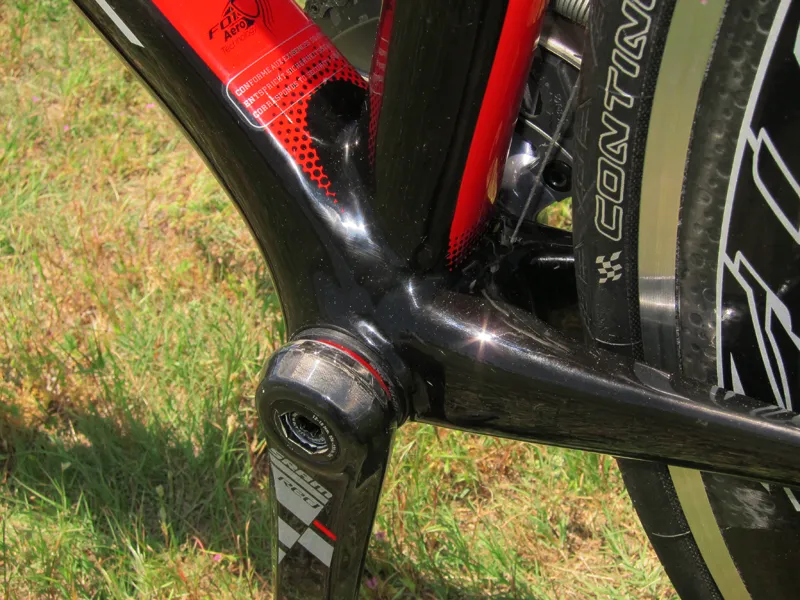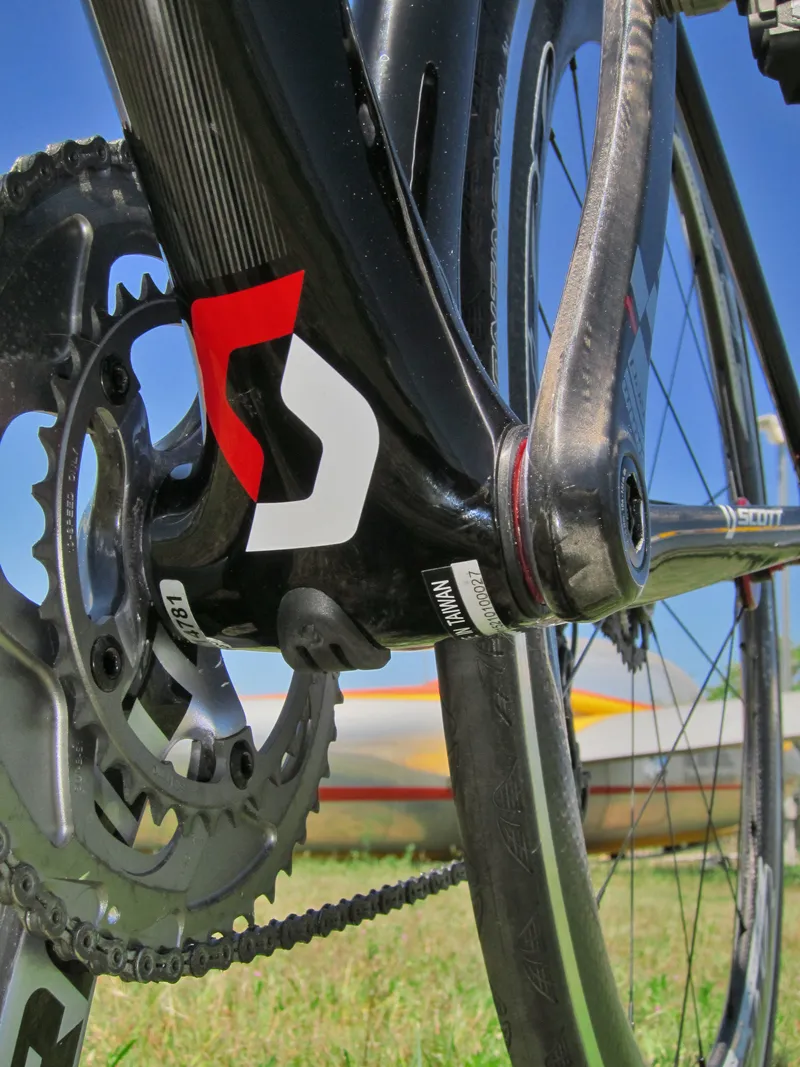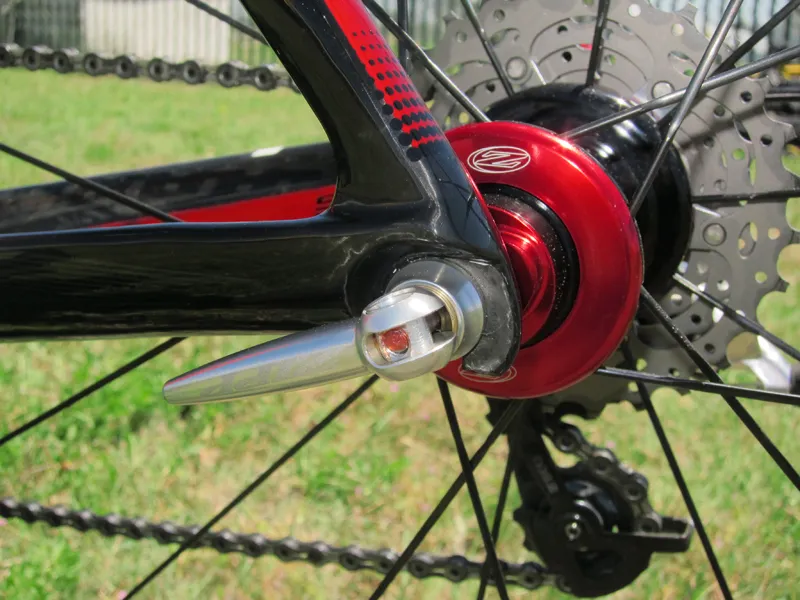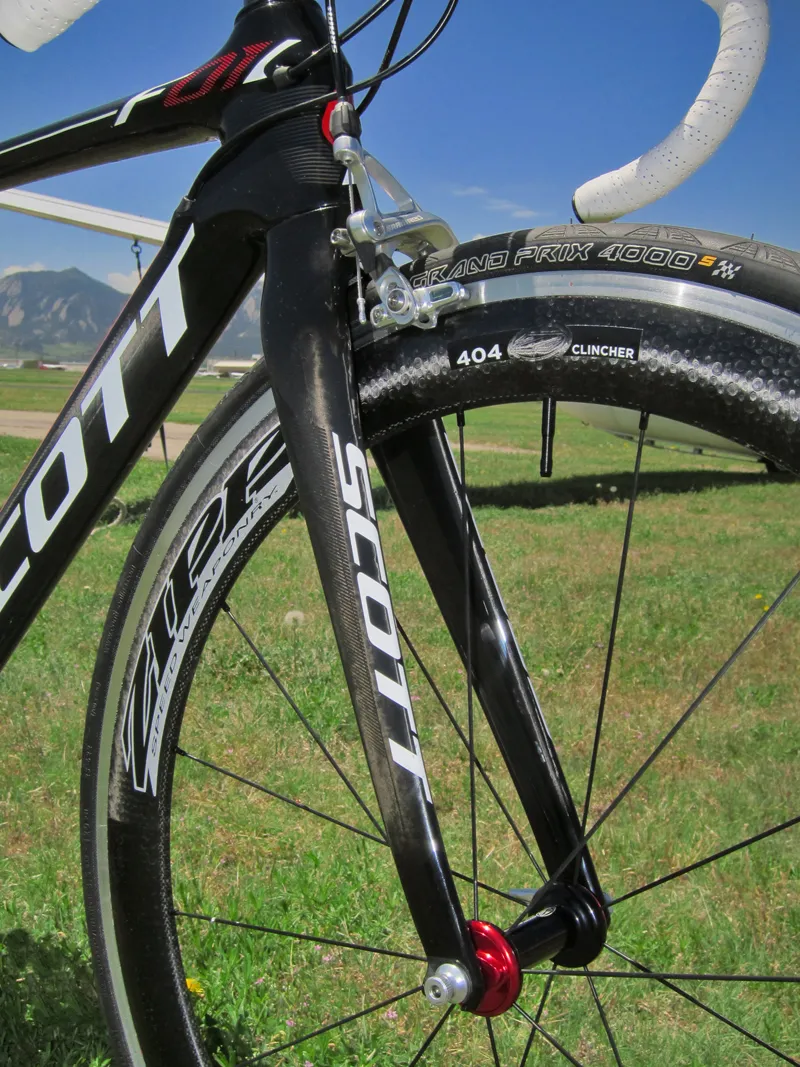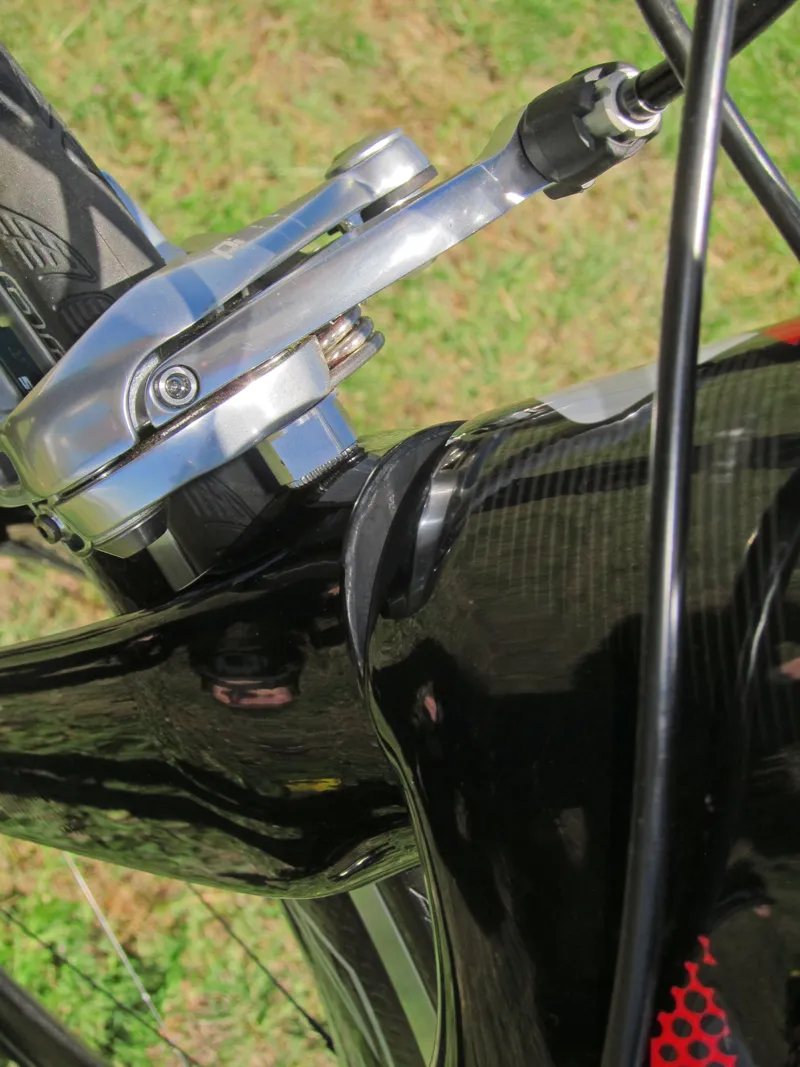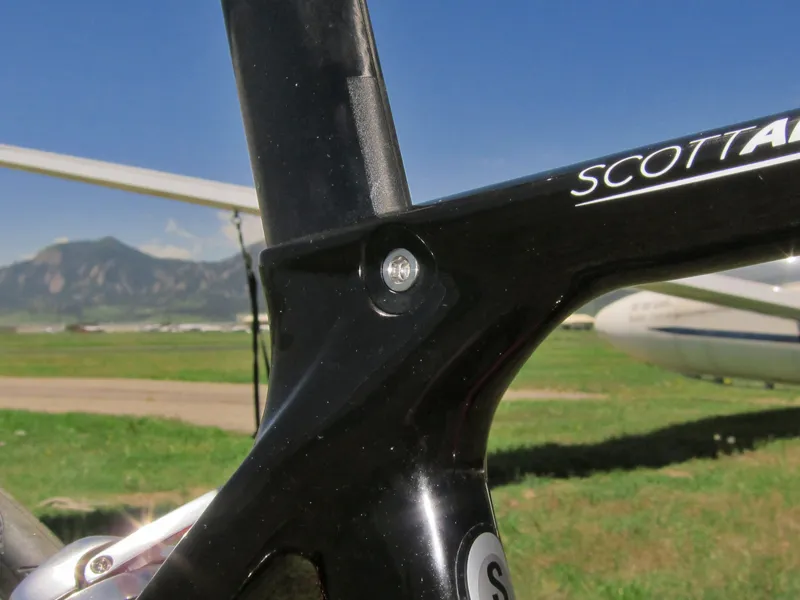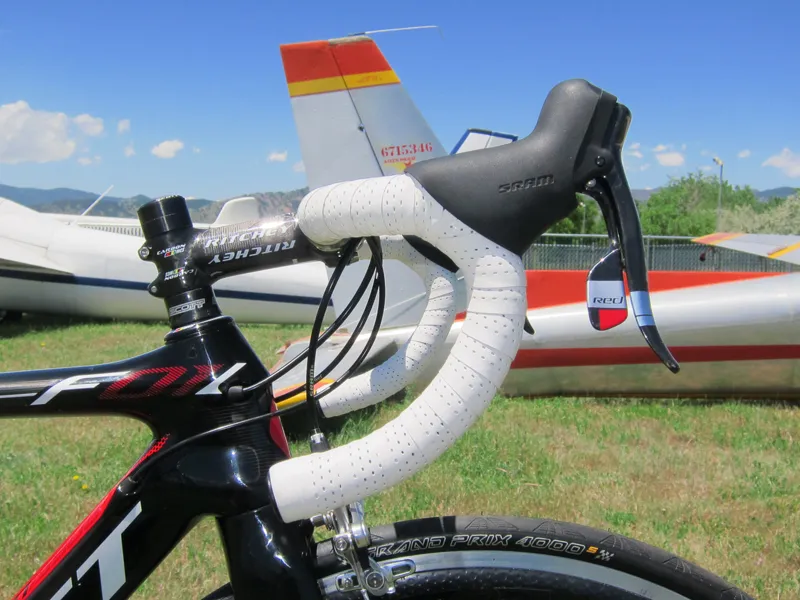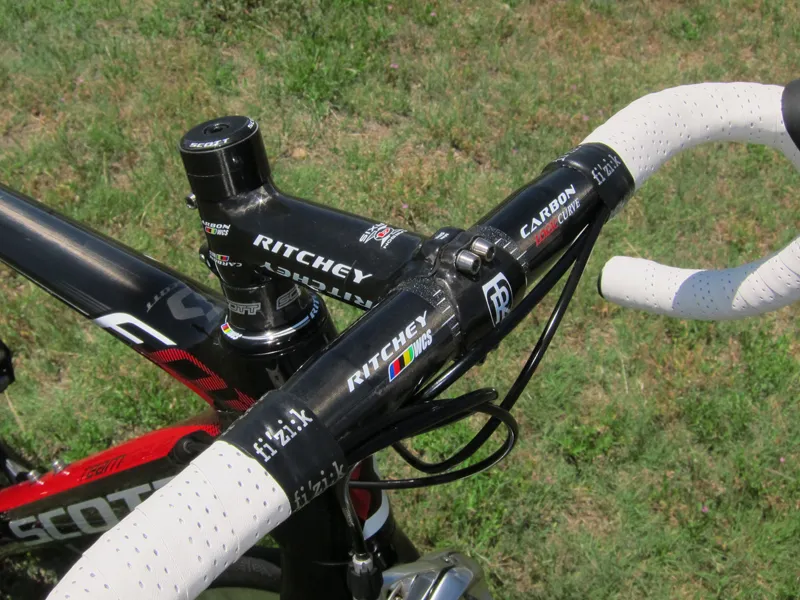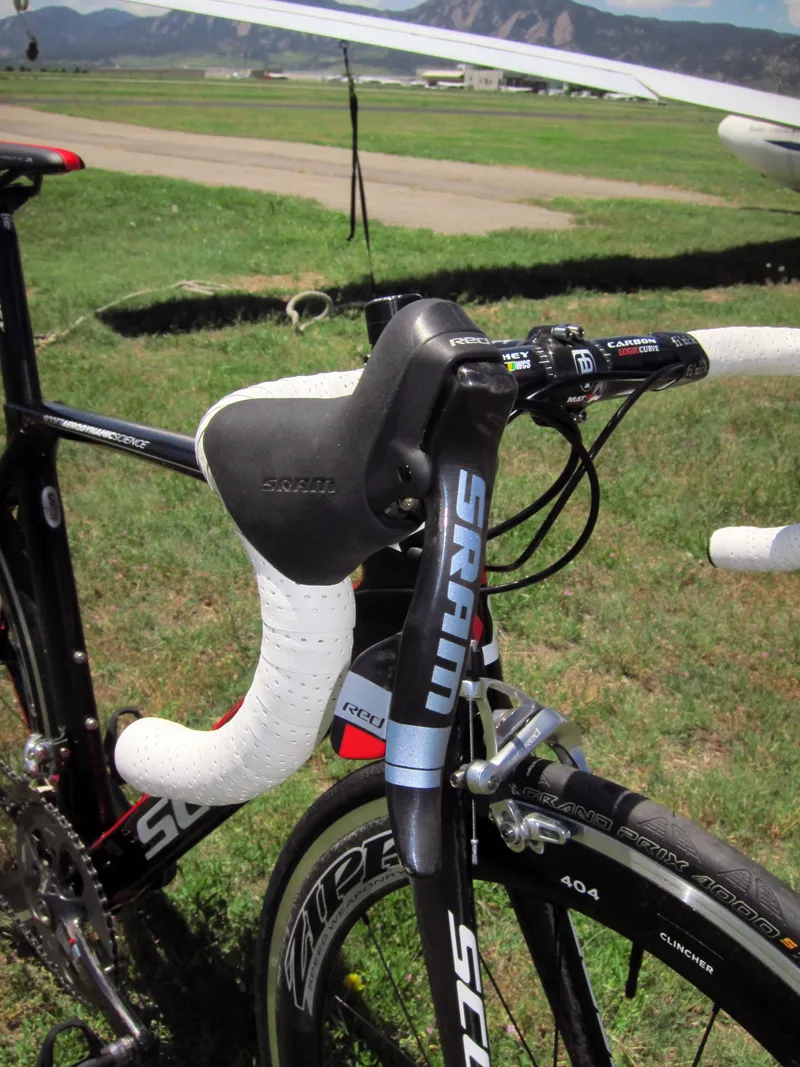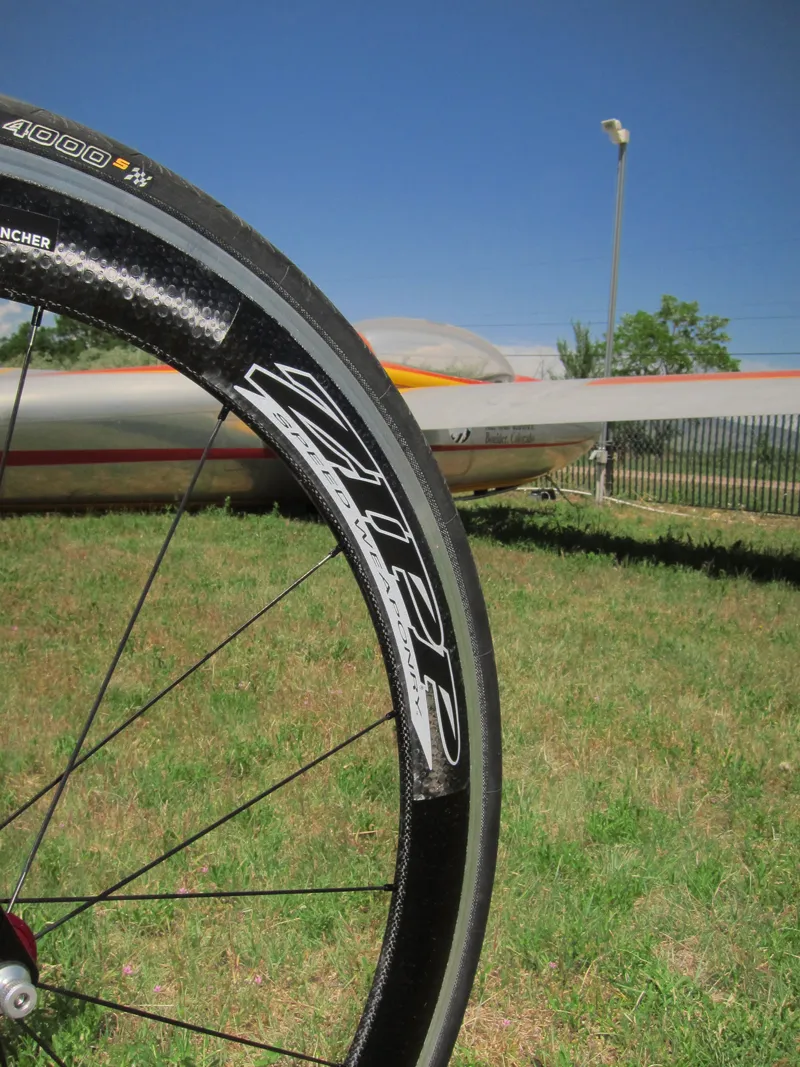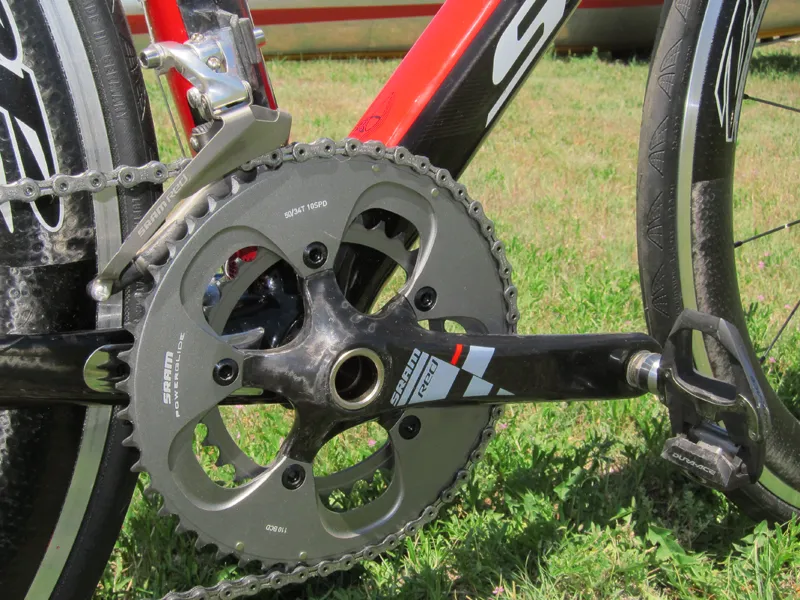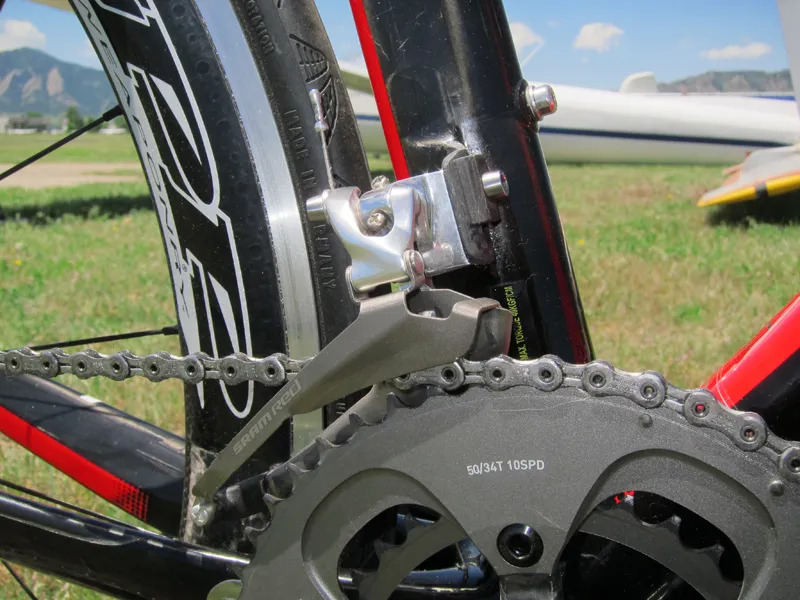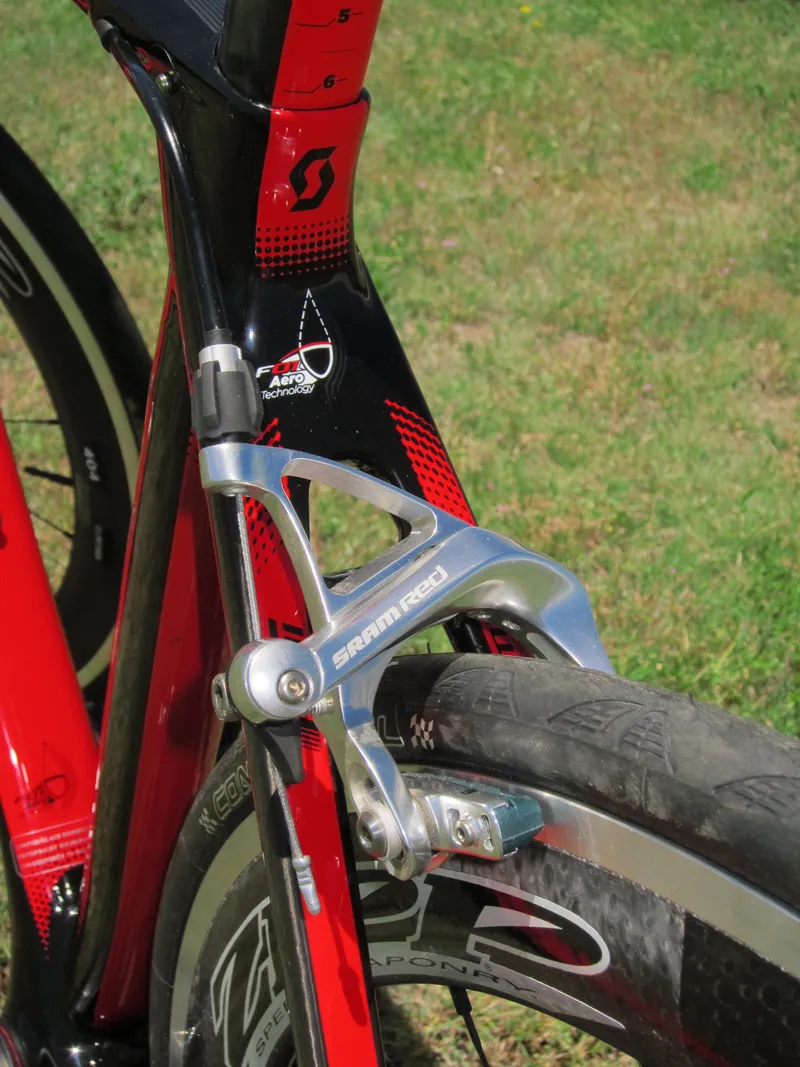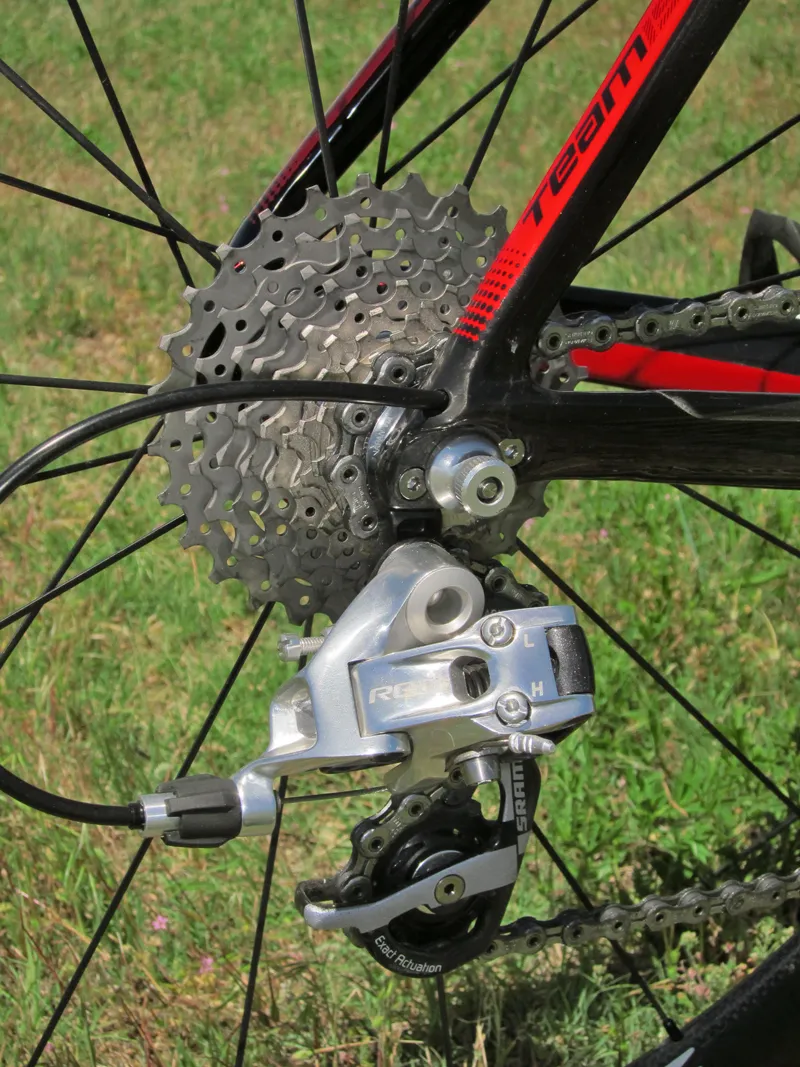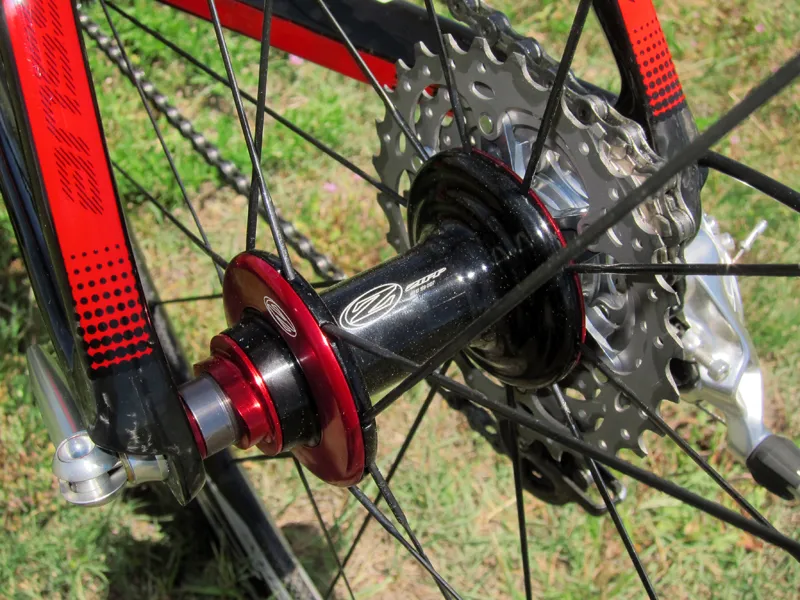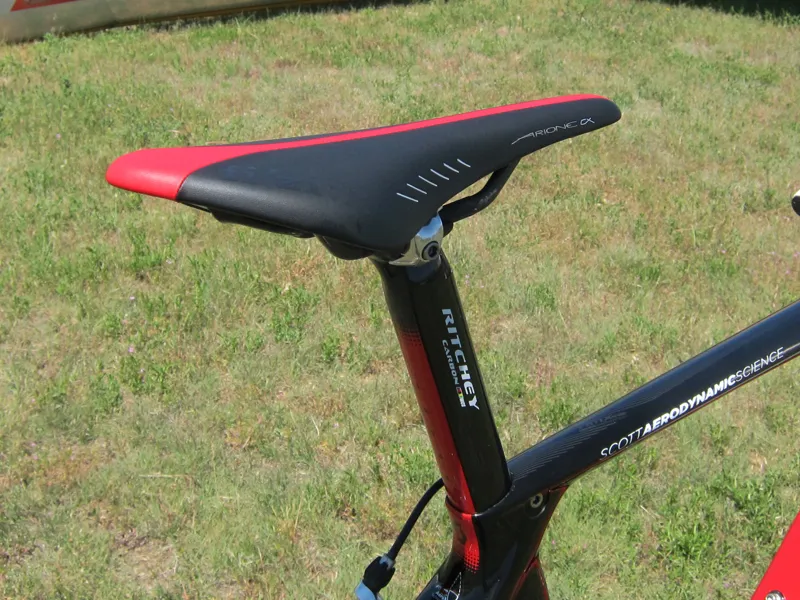Scott's new FOIL carbon road bike takes an unconventional approach to reducing aerodynamic drag but the upside of its clever tube shapes is fantastic performance out on the road, with virtually zero compromises made in terms of stiffness or weight.
Actual mass of our 52cm test frame is just 890g (with rear derailleur hanger, seatpost binder and water bottle bolts) and the complete bike without pedals tips the scales at only 6.63kg (14.62lb). More importantly, the FOIL offers the same quick reflexes and stout backbone as Scott's own Addict benchmark so you can more or less have your cake and scarf it down, too.
Ride and handling: Über-efficient but the ride quality takes some getting used to
Shut your eyes during a big effort (not recommended, by the way) and you'd be hard pressed to tell the difference between the FOIL and an Addict. Just like Scott's previous flagship bike, the new FOIL is phenomenally stiff both when charging up a climb in the saddle or wrestling the bars in a desperate sprint for a town sign. That rigidity is well balanced from front to rear, too, with no odd flex points in between to throw things off.
From the rider's perspective, there have been almost no compromises made to deliver the purported aero benefits, unlike some other similar machines out there – all you notice is the lack of mass and the sturdy backbone, and few riders are apt to be upset about it.
Handling is also classic Addict, as Scott have faithfully copied over that bike's geometry nearly millimeter for millimeter across the seven-size range, save for a few minor tweaks to fork rake here and there. As such, the FOIL is just as happy carving high-speed, sinuous mountain descents as it is ripping turns around a city block when you're on the rivet. While perhaps not as unflappably stable as Trek's Madone, for example, it's not far off.
Speaking of the Madone, Scott have also carried across the now well-proven fit of the Addict, with head tube lengths that fall roughly in between Trek's H1 and H2 geometries. If you're into comparing numbers, the FOIL is more akin to Cervélo's revised R-series sizing.
Riders looking for a somewhat casual, but speedy, cruiser should have few issues getting the bars up a bit higher while hardcore racers will be able to get the bars plenty low by slamming the stem atop the headset cover. In either case, Scott have gone with more of a sloping top tube but that really only affects the aesthetics – the seat tube angle is the same as before.
If this all sounds too good to be true, you'd be at least partially correct. Unfortunately, one performance metric that does seem to have met the chopping block is ride quality – like it or not, the new FOIL is notably less forgiving than the already-stiff Addict.
Though the feel is admirably lively and springy compared to some other aero machines, whose thick tube walls can lend a somewhat dead personality, the FOIL still gives you a hard kick in the rear (and the hands) when hitting potholes and frost heave. It damps road texture only modestly well, too, so as much as we hate to say it, riders living in areas with less-than-adequate road maintenance will probably want to pass.
Then there are the purported aero benefits of Scott's F01 partial-airfoil tube shaping, which is claimed to produce 20 percent less drag than a round-tubed bike (4-5% with a rider on board) and average power savings of 15 watts at 45km/h, all while still mostly retaining the light weight and stiffness that a nominally round tube provides.
Naturally, one has to ask: can you feel such a difference? While it's relatively easy to maintain a high speed on the FOIL Team Issue – and accelerate to an even higher one when needed – most of that sensation can be credited to the deep-section Zipp wheels. We couldn't feel any of the frame's aero benefits during our test rides with non-aero reference wheels.
Even Scott marketing and PR director Adrian Montgomery admits that while the advantage can be measured in a wind tunnel, it's not dramatic enough that you can readily feel it on the road so don't expect any "OMG, I'm going SO much faster!!!" types of thoughts if you happen to find yourself aboard one.
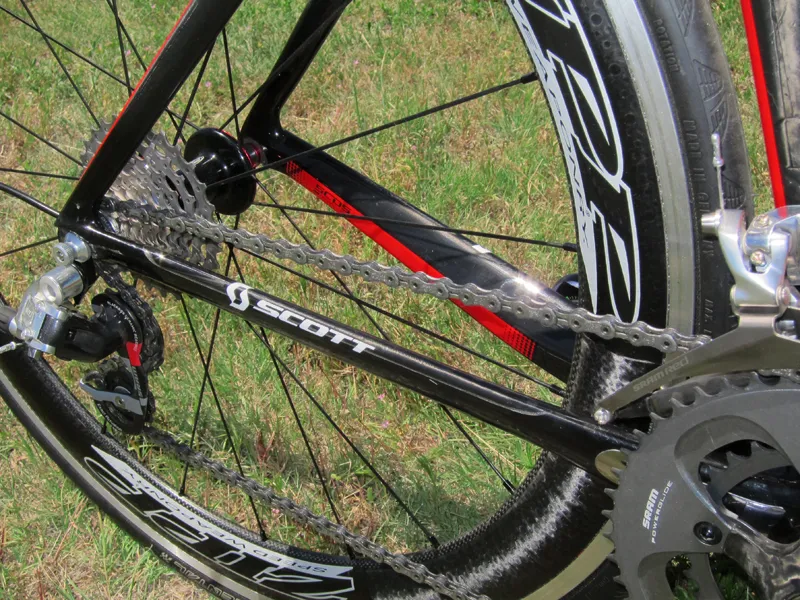
Tall and narrow chainstays often result in a flexy rear end but Scott have tilted the ones on the FOIL, lending a unique look and also rock-solid pedaling efficiency
Frame: All the current bells and whistles and a pretty face to boot
Scott's F01 tube shaping marks a sharp departure from the classic norm. Rather than use complete 3:1 or NACA airfoil sections, they've instead opted for truncated sections that reportedly mimic much deeper and aerodynamically efficient shapes despite the lopped-off tails – similar to what Trek have done with their Speed Concept.
The theory goes that the resultant semi-triangular shape allows for wider tube sections and thinner tube walls than the traditional approach, thus producing that impressive weight and remarkable rigidity. Scott apply this design methodology to the down tube, seatstays, seat tube and matching carbon fiber seatpost (and partially to the fork blades and chainstays as well). In case there's any confusion as to what's been done where, strategically applied red paint marks where airfoil tails have been removed.
Not surprisingly, Scott have integrated just about all of the features deemed virtually standard these days into the all-carbon FOIL, including a tapered 1-1/8 to 1-1/4in head tube, an 86mm-wide bottom bracket with press-fit cups (for 24mm spindles only), internal cable routing that isn't too infuriating to string (aside from the poorly executed bottom bracket guide which mangles cables if you're not meticulous), plus a carbon fiber front derailleur tab and dropouts.
The lower headset bearing seat is molded directly into the carbon frame structure while the upper bearing resides in a ZeroStack-type press-fit aluminum cup. Rather than use a profiled external seatpost collar, Scott instead use a nicer-looking internal wedge-type binder that virtually disappears into the top tube. The overall frame shape is notably smooth, with rounded and gentle transitions, unlike Scott's current Plasma.
The top two FOIL models use Scott's flagship HMX NET carbon fiber blend while the other pair use the slightly heavier HMF NET mix. The matching 330g all-carbon fork is an interesting beast, too, featuring a shaped crown to match up with the F01-profile head tube, carbon tips, and an integrated carbon lower bearing seat. In addition to being light, the deep and relatively broad legs are admirably stout and contribute to the bike's confident cornering manners.
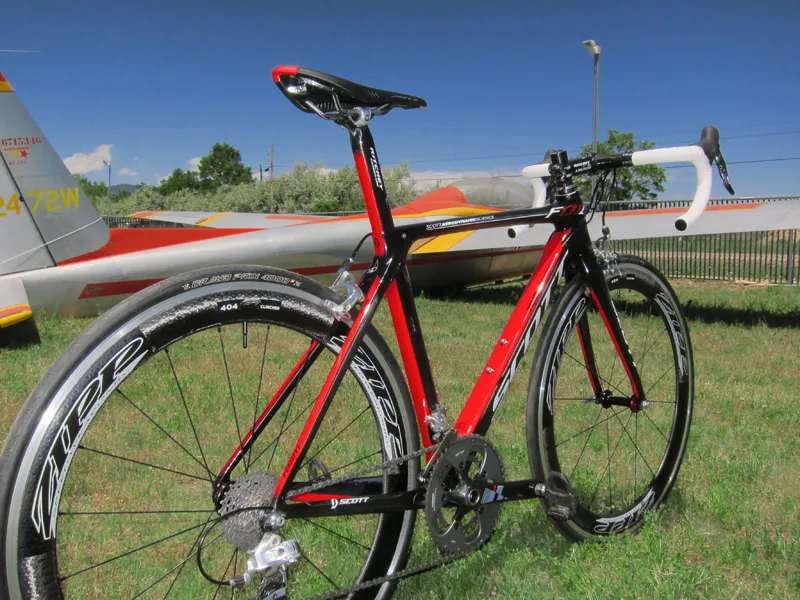
Red paint highlights areas where the tail ends of airfoil sections have been lopped off
Equipment: Light and positive SRAM Red paired with Zipp aero clinchers
Scott dress the second-tier Team Issue model with a race-ready component that includes a complete SRAM Red group (but a Shimano Dura-Ace chain and cassette), Zipp 404 clincher wheels wrapped in Continental Grand Prix 4000 tires, a Ritchey carbon-and-aluminum stem and semi-anatomic carbon bar, and Fi'zi:k's popular Arione CX saddle with braided carbon rails.
Not much needs to be said about the proven and very light SRAM Red group – shifts are positive and accurate, the highly adjustable DoubleTap shift levers have gloriously short throws, and the dual-pivot brakes offer plenty of stopping power with good control. Scott's substitution at the cassette and chain positions sacrifices some long-term durability on account of the titanium cogs but the upside is a quieter drivetrain.
As we've already mentioned, the stock Zipp 404 clinchers are notably speedy and general road racers and sport riders likely won't have much to complain about – they're respectably rigid both laterally and in torsion, the adjustable hubs are smooth and fairly easy to service, and they held up just fine during our test period. That being said, it's still worth noting that these wheels use Zipp's older 404 profile, not the more advanced (as in faster and easier-handling) Firecrest shape. Also, more weight-conscious buyers might find them a bit heavy at a claimed 1,658g per pair.
As for the saddle and stem – no complaints there for the most part, and the Arione shape will either suit you or it won't. We'd prefer a more aggressive bend than the semi-anatomic one on the Ritchey WCS Carbon Curve bar, though. While mostly comfortable, it'd be nice to have a drop that offered a lower and longer position than when on the hoods.
New bike buyers considering a Scott Addict would be well served taking a look at the FOIL, since aside from a slight weight and ride penalty, there's little reason not to chose the aero option over the non-aero one. However, there is the price: at US$8,999.99 the FOIL Team Issue costs a pretty penny, especially when compared to similarly equipped non-aero bikes like the Felt F3 that's $3,700 cheaper. Heck, even the Ultegra-equipped FOIL F2 starts to sound like a bargain at $3,699.99.
Is it worth it? Sorry, that's not a question we can answer for you. But suffice to say, the FOIL Team Issue is a ripping ride with few chinks in its armor. If your wallet allows, you demand nothing but top-end gear for yourself, and you've got room in the back of the Cayenne, we're guessing buyer's remorse won't set in – at least until the following model year…

Zipp's 404 Clincher wheels are fast and rigid, though weight weenies might find them a touch heavy
